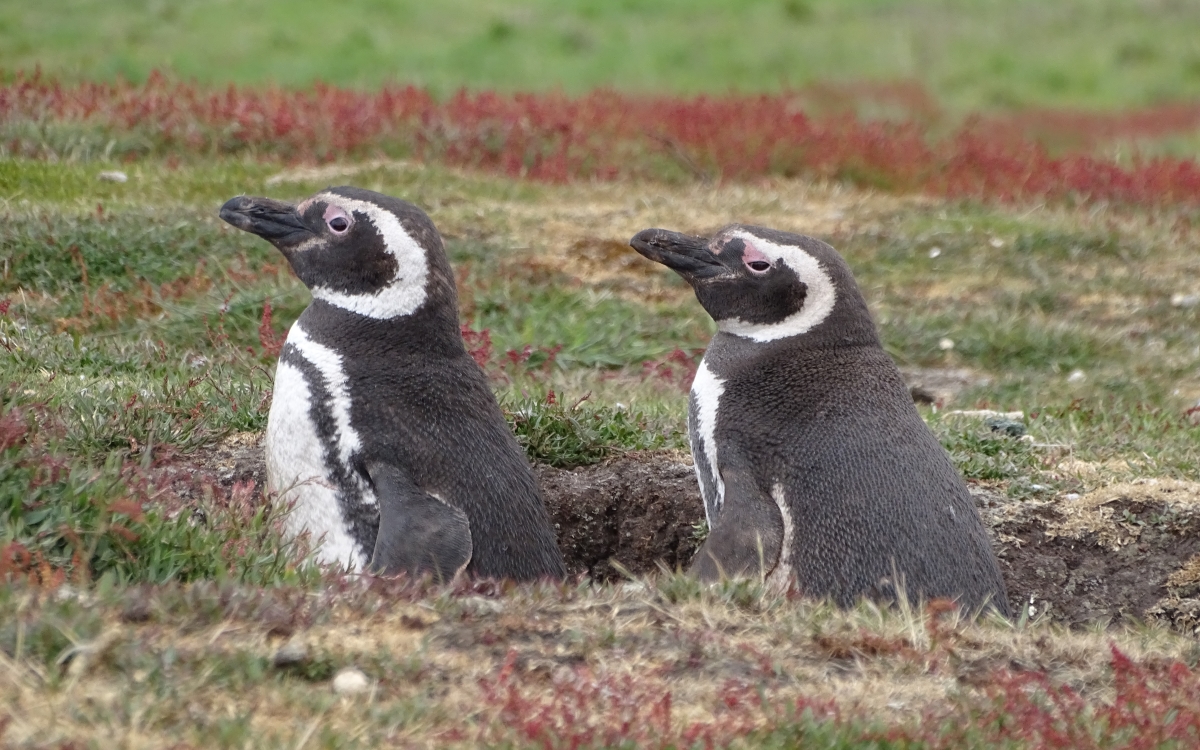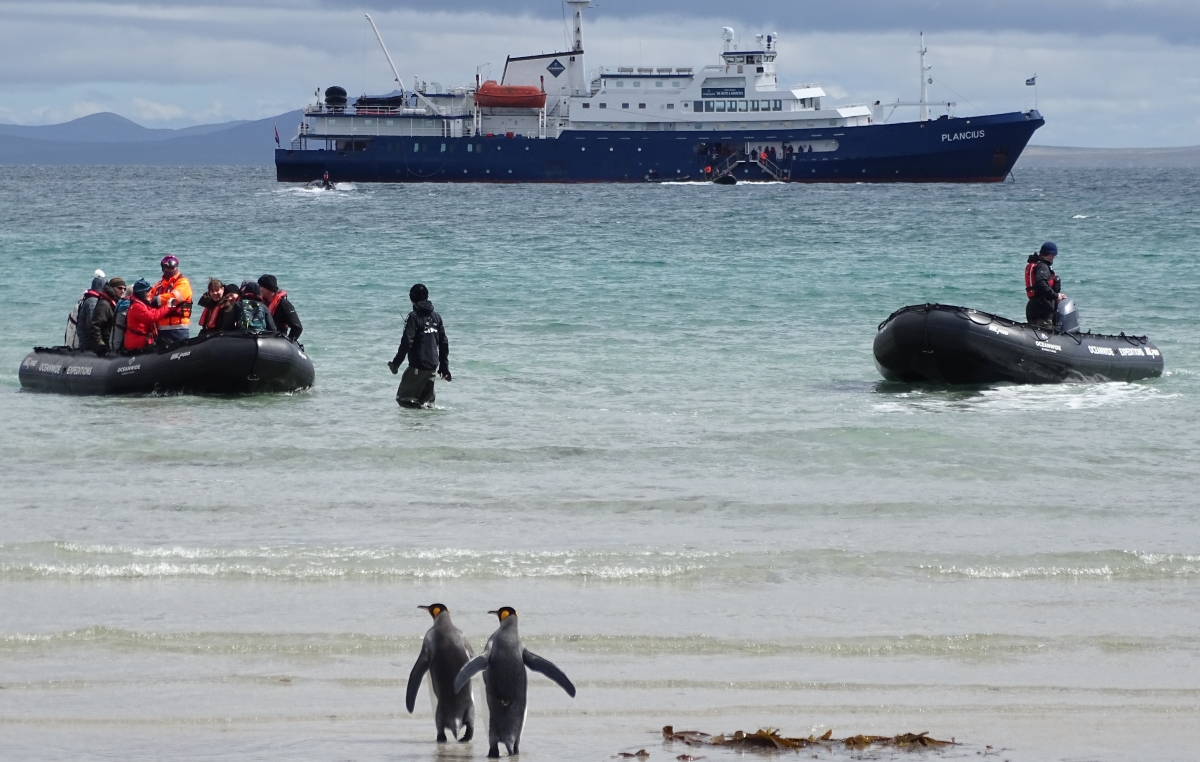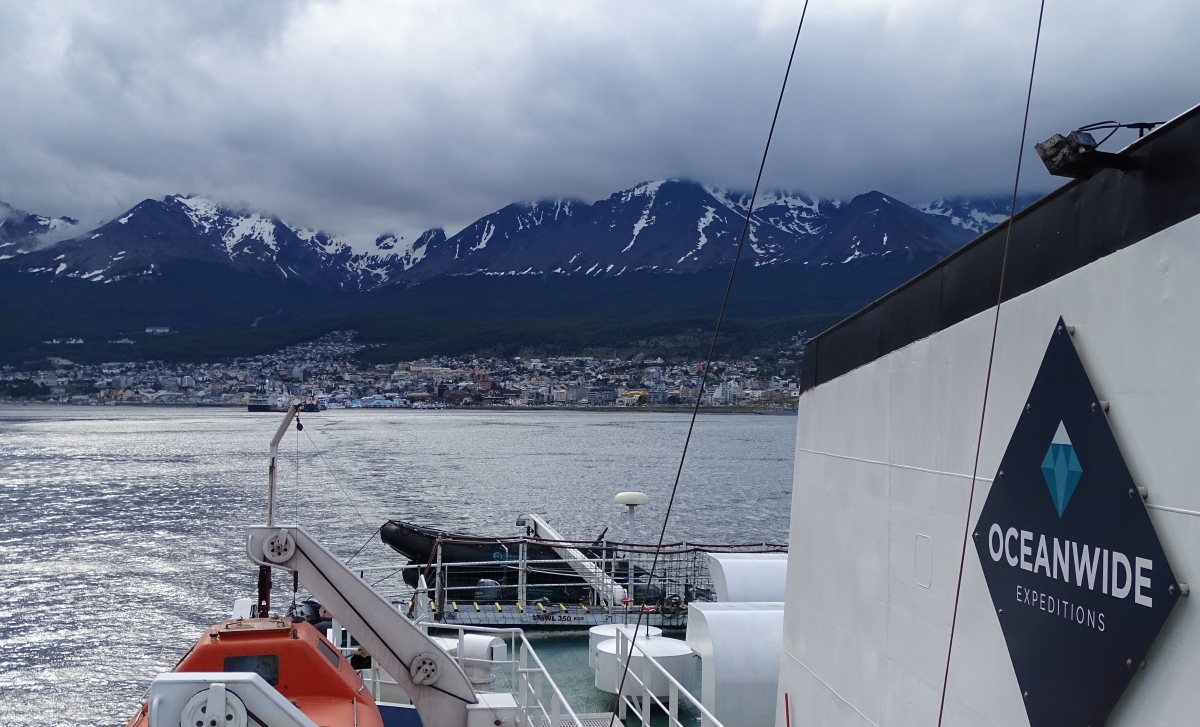Sarah Williams, Gane and Marshall travel consultant & wildlife expert, travelled to Antarctica in December 2018 on a 3-week expedition voyage. Here she recounts part of that journey, in which she sailed from the southern tip of Argentina to the Falkland Islands.
It was a bright summer’s morning as I flew over the stunning snow-capped mountains towards Ushuaia, at the extreme south of Argentina. This southernmost town is the jumping off point for Antarctic cruises, as well as a lively hub in its own right, and staying for a few days prior to my Antarctic voyage I found time to explore, fitting in a cruise along the Beagle Channel, a visit to Tierra del Fuego Park, a ride on the Southern Fuegian Railway (the so-called “Train at the End of the World”), as well as lots of great food, including local specialty king crab!
After a few days of rest and acclimatisation in Ushuaia, I boarded my ship, the m/v Plancius, which would over the course of the next three weeks take me on an unforgettable journey to the Falkland Islands, South Georgia and the Antarctic Peninsula. It was on a clear afternoon that we pulled away from the port of Ushuaia and began down the Beagle Channel, full of anticipation for the journey ahead.
That evening, we enjoyed a glass of fizz as the expedition leader and ship’s captain spoke about the voyage ahead. With only 100 passengers aboard, the atmosphere was relaxed and this first evening provided a good opportunity to mingle and get to know one another.

Magellanic Penguins
Our first full day was spent at sea sailing towards the Falkland Islands, with most of those on board acquiring their sea legs. It was also a chance to take a look around the ship – a former Antarctic research vessel refurbished to modern standards, with spacious, warm cabins and a bright lounge that served as a central hub.
The following morning we arrived at the Falkland Islands having sailed through the ‘Woolly Gut’, a narrow channel separating two of the islands, so-named because the hillsides either side if the channel are covered in a bright yellow gorse.
Our first journey ashore in a zodiac was to Carcass Island, and though for most of us this was a new experience, we all managed to arrive with only our boots getting wet. We had only walked a hundred meters when we saw our first penguins – Magellanics, a small species notable for its habit of forming underground nests. We soon after encountered Gentoo Penguins, who unlike the Magellanics form nests above ground, and will happily steal any suitable nesting material from other nests to do so! Continuing to the white sands of Leopard Beach, we spotted flocks of Upland Geese as well as a lone Striated Caracara, whom we encountered tucking into carrion. We ended our tour of Carcass Island with a walk around the bay to arrive at the home of Rob and Lorraine, the local landowners, who welcomed us into their home with a delicious array of home-made cakes and biscuits.

King Penguins welcoming us to Saunders Island!
Back on board, the Plancius sailed around to Saunders Island, where we saw our first King Penguin colony; the adults standing tall and proud alongside the young chicks easily identifiable by their thick brown coats. There were also large colonies of King Cormorants, their eyes an amazing blue, and beautiful Black-browed Albatross, whose colony was perched on the edge of a cliff. The Rock Hopper penguins, with yellow eyebrows, were perhaps the highlight, and I sat and watched these amusing characters for a while.
Overnight we sailed to Port Stanley – for many British people the name of this small town is etched in our memories. It was a beautiful clear day to wander around and visit the cathedral, the museum and Governor’s Residence. We returned to the ship to set sail towards South Georgia, two days’ journey away.
My journey would continue into the Antarctic. During the days at sea, there was no time to get bored – the crew on the Plancius provided fascinating lectures on a wide variety of subjects, such as the destinations to be visited, the famous explorers of the region, the whaling industry, and the wildlife and birdlife that we would encounter once in Antarctica. But that will be the subject for a later blog!

